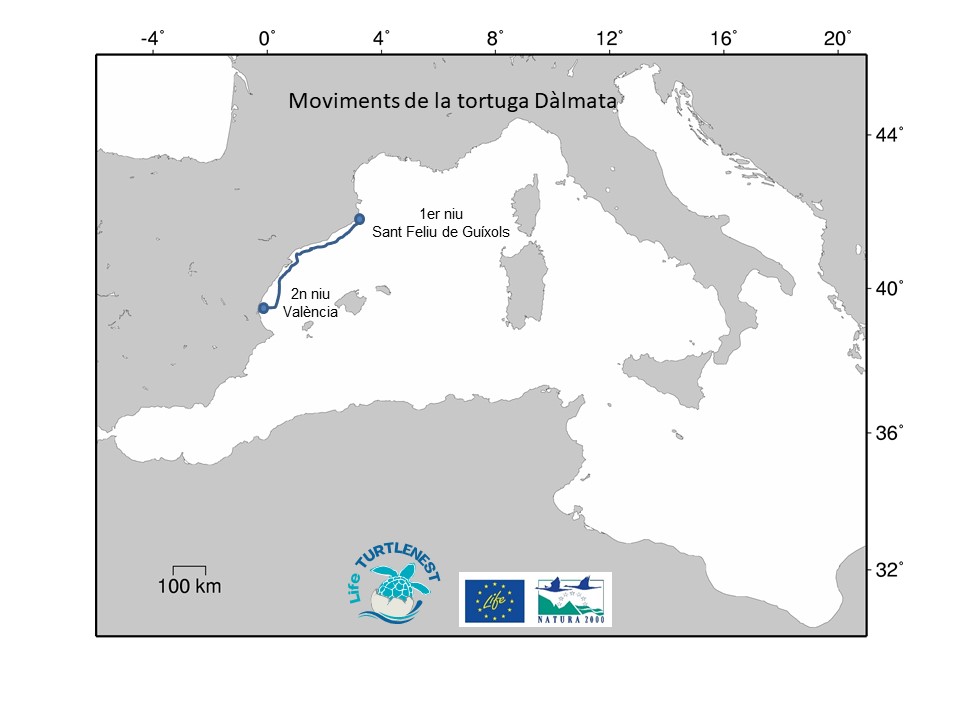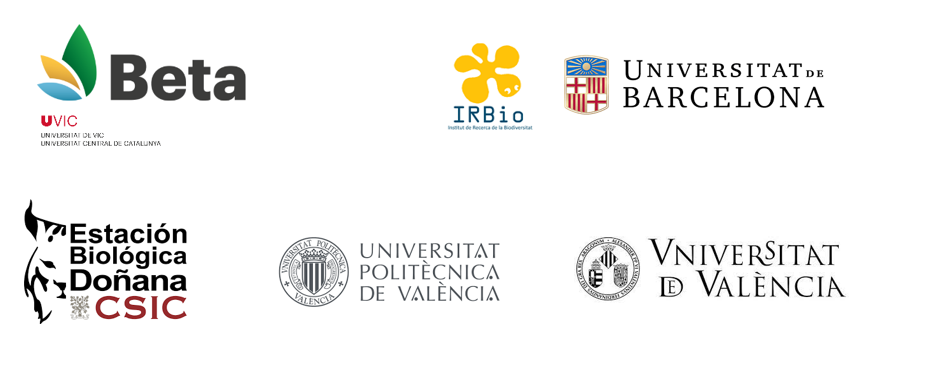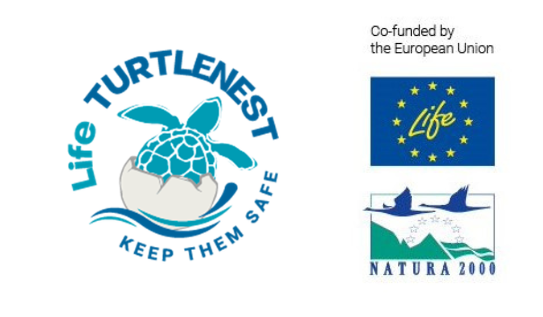Dálmata, the story of the sea turtle nesting on both the Catalonian and Valencian coasts in a single season

Dálmata is a female loggerhead turtle (Caretta caretta) that has laid two nests in less than two weeks on beaches along the Spain’s Mediterranean coast -one in Catalonia and the other in the Valencian Community. This rare nesting event highlights the importance of scientific monitoring and public involvement in the conservation of this threatened species, which undertakes long migrations to areas like the western Mediterranean.
The first clutch was laid on June 25 on the beach of Sant Feliu de Guíxols (Girona), where Dálmata deposited 101 eggs. Thirteen days later, on the night of July 8, she laid a second clutch of 129 eggs on the beach of El Puig (Valencia). Identifying multiple nests from the same female turtle in a single season provides valuable insights into how loggerhead are expanding into new nesting areas in the western Mediterranean -a key aspect of ongoing conservation research.

Dálmata is part of ongoing research efforts to monitor Caretta caretta through interdisciplinary projects such as LIFE TURTLENEST and InGeNi-Caretta. These initiatives involve the University of Barcelona, the Biodiversity Research Instituto of the UB (IRBio), the BETA Technology Center at the University of Vic – Central University of Catalonia (UVic-UCC), the University of Valencia, the Polytecthnic University of Valencia, and the Doñana Biological Station – CSIC. They work in partnership with marine wildlife rescue centers and active citizen support.
This turtle is equipped with a transmitter that allows researchers to track all her movements, identifying the habitats she frequents, and facilitate detection, protection, and study of her nests and offspring. At the same time, genetic analyses are being conducted to determine the origin and relationships of nesting females, as well, as other research into their diet and habitat use using techniques such as stable isotope analysis.
Public collaboration to protect sea turtles
Citizen collaboration plays a crucial role to promptly detect sea turtle nesting events along the coast. If someone sees a female turtle, a hatchling, or tracks in the sand, they should immediately call emergency number 112 without interfering in any way: the animal must not be disturbed, the track must not be stepped on, and the person must wait for specialized personnel to arrive. In the case of Dálmata’s second nest, the team was already aware of her proximity to the coast thanks to the satellite transmitter, but it was a citizen’s call to 112 that confirmed that there was a second nest.
Financiación
InGeNi-Caretta is supported by the Fundación Biodiversity of the Spanish Ministry for the Ecological Transition and the Demographic Challenge (MITECO), under the National Recovery, Transformation and Resilience Plan (PRTR), funded by the European Union - Next Generation EU.

LIFE TURTLENEST is a project cofunded by the LIFE program of the European Comission, under the reference LIFE21-NAT-IT-LIFE-TURTLENEST/101074584
